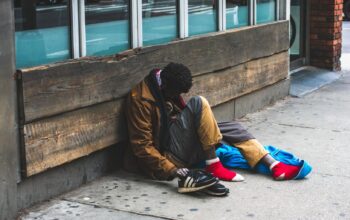Chicagoland is filled with many Black cities. Dolton. Harvey. Maywood. Bellwood. Markham.
For decades, these suburban towns have been the home of thousands of Blacks trying to live the American Dream away from the violence and vices of Chicago. But the population of these cities has dwindled in the last decade, according to the latest U.S. Census figures.
While these Black suburban towns struggle to rebound, one flourishing village 28 miles south of Chicago has emerged as the new town for the affluent Black bourgeois.
They live in Flossmoor, a small, quaint but historic 100-year-old town that was founded when its elite golf club led the Illinois Central Railroad to promote Flossmoor to white, affluent prospective buyers seeking to buy homes. For decades, Flossmoor remained a place proud of its polished reputation as a small tony town for the affluent.
More than 85 years later, Blacks in 2010 became the majority population, making up Flossmoor’s 9,464 residents. Since then, hundreds of Blacks have moved in, pushing Flossmoor’s population to nearly 10,000– its largest ever.
Today, according to the U.S. Census recently released figures, Blacks now make up 58 percent of Flossmoor’s population, capping 30 years of dramatic change in a town that once had just 910 Black residents. Now, Flossmoor has one of the highest Black homeownership in the country.
But there is another trend occurring in this tiny town that is all too familiar to towns undergoing demographic change. As Blacks are moving in, whites in Flossmoor are moving out.
After decades in Flossmoor, well-heeled whites are leaving their grand homes, pristine parks, and stellar schools behind to a professional, upwardly mobile class of Black residents who have longed to live in an affluent, suburban town to raise families and enjoy the American Dream.
For nearly 100 years, Flossmoor shone as an affluent, predominately white, small town. Accomplished Jewish and Italian residents lived there in the 1970s. Its nationally renowned country club is one of the most prestigious in the country. It hosted the 1924 PGA Championship and the Western Open.
Flossmoor grew as a “status” town for the elite. Today, Flossmoor’s historic downtown, exclusive retail stores, high-end restaurants, and Tudor-style buildings, have attracted well-educated Blacks full of ambition, college degrees, professional careers, and six-figure incomes
While the demographic population has dramatically changed, Flossmoor’s quality of life and profile have not. Businesses are still humming with customers and the city’s charm and appeal remain strong.
But whites continue to move out as more Blacks move in. According to the U.S. Census, in 1990, Flossmoor’s 8,651 population was 84 percent white. Only 910 Blacks lived in Flossmoor, making up just 11 percent of the town’s population.
By 2000, the Black residents made up 27 percent of Flossmoor’s population as the white majority fell to 66 percent. By 2010, thousands of white residents left Flossmoor as Blacks for the first time in the town’s history became the majority population, making up 48 percent of its residents.
By 2020, according to the U.S. Census, 5,707 of Flossmoor’s 9,704 residents were Black while only 3,019 were white. In the last 10 years, Flossmoor’s Black population nearly doubled that of its white residents, giving Blacks a 58-percent majority compared to the white’s 31 percent.
Real estate experts and urban planners attribute Flossmoor’s dramatic demographic shift to economic gains made by college-educated and professional Blacks whose parents or relatives lived in nearby Olympia Fields and Matteson. They are two predominately Black middle- and upper-middle-class cities that are among five growing Chicago suburban towns that were once predominately white cities before Blacks became the majority population.
In a study by the American Community Survey in 2018, Olympia Fields, South Holland, Flossmoor, Matteson, and Lynwood were among nine U.S. towns that had the highest Black home-ownership rates in the country.
As Black homeownership fell to 50- year record lows at 42 percent, Olympia Fields had the highest Black homeownership rate in the country with 98 percent in 2018. South Holland had the fourth-highest Black homeownership rate at 85 percent. Flossmoor was fifth with 83 percent. Matteson and Lynwood each had Black homeownership rates of 80 percent.
Of this group, Flossmoor is the youngest predominately Black suburban town that continues to attract new Black residents. According to the latest U.S. Census, the median annual income for families in Flossmoor is $115,288. About 62 percent of Flossmoor’s residents have a college degree and 98 percent graduated from high school.
During the pandemic, Flossmoor remained one of the hottest towns for new buyers. One home reportedly sold for $450,000. Flossmoor’s 122-year-old golf club reportedly sold over 100 memberships to both residents and non-residents seeking a break from home quarantines.
On the Flossmoor website and Facebook page are pictures of Black families with their dogs standing in front of large, two-story homes. There’s also a picture of five Black doctors standing in front of a barbershop and men’s spa. There are also photos of Black and white business owners in front of the historic, quaint Flossmoor Metra train station. In June, after Juneteenth became a federal holiday, thousands of Blacks attended a celebration in the parking lot at Homewood- Flossmoor High School.
Blacks are also attracted to Flossmoor’s public schools. Its only high school, Homewood-Flossmoor, has been named a Blue-Ribbon school for excellence three times by the U.S. Department of Education. The school is renowned for its vast selection of Advanced Placement classes, Fine Arts department, and athletics program. It has also been named numerous times as a challenging school by Newsweek magazine and the Washington Post.
Once a predominately white school, most of Homewood-Flossmoor’s 3,000 strong student body is Black. In 2019, about 1,000 Black students walked out after a video showed several white students in blackface during a visit to a local McDonald’s.
The incident highlighted the challenges most towns face during changing demographic populations. Despite the demographic shift, Flossmoor’s Black population has yet to gain political representation on the Flossmoor Village Board. Two of the six-member Board of Trustees are Black.
The oldest serving member, Joni Bradley-Scott, a Flossmoor resident, was elected to a four-year term in 2021. The other Blackboard trustee, George Lofton, has been serving since 2020. He has lived in Flossmoor since 2005.
Flossmoor’s mayor or village board president is Michelle Nelson, elected last April for a four-year term that expires in 2025.
Source: Chicago Crusader


